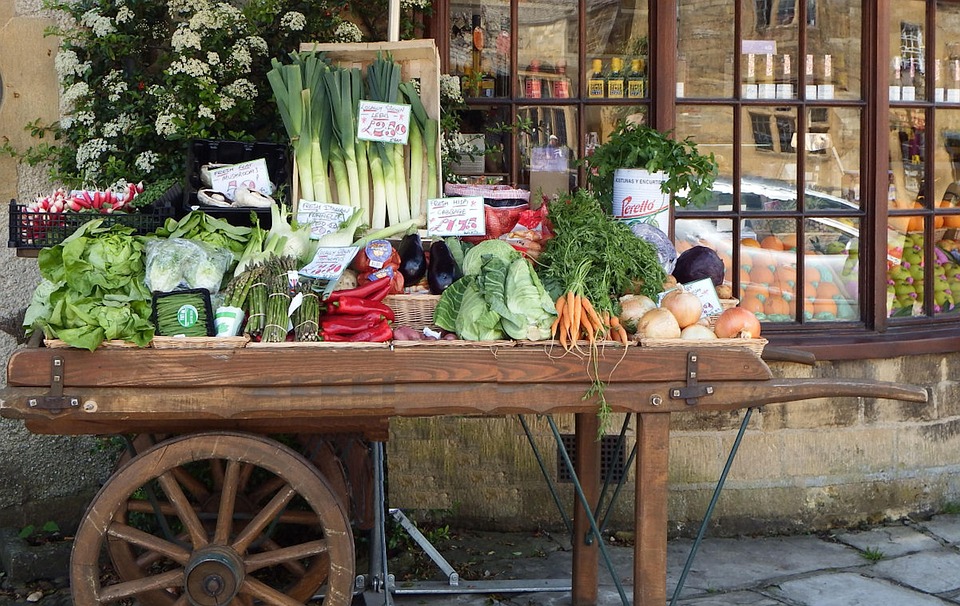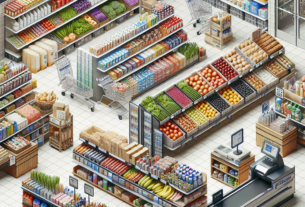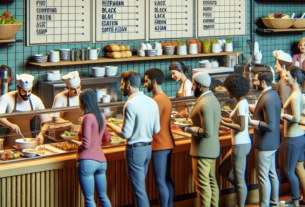Introduction
The grocery retail industry has seen significant changes and advancements over the last decade. With the rise of e-commerce, changing consumer preferences, and the impact of technology, grocery retailers have had to adapt and innovate to stay competitive. In this report, we will explore some of the most successful grocery retail business models of the last decade, examining their strategies, financial performance, market share, volumes, and future plans.
Traditional Grocery Stores
Traditional grocery stores have been a staple in the industry for many years. These stores typically offer a wide variety of products, from fresh produce to packaged goods, and are known for their convenience and accessibility. While traditional grocery stores have faced increasing competition from online retailers and specialty stores, many have been able to adapt and thrive by enhancing their in-store experience, offering online ordering and delivery services, and expanding their product offerings to include organic and specialty items.
One example of a successful traditional grocery store chain is Kroger. With over 2,700 stores nationwide and annual revenues exceeding $120 billion, Kroger is one of the largest grocery retailers in the United States. The company has invested heavily in technology and innovation, launching initiatives such as Scan, Bag, Go, a mobile shopping app that allows customers to scan and bag their items as they shop. Kroger has also expanded its online presence through partnerships with Instacart and other online delivery services, making it easier for customers to shop online and have their groceries delivered to their doorstep.
Discount Retailers
Discount retailers have also seen success in the grocery retail industry, offering customers low prices and a wide selection of products. These retailers typically operate on a high-volume, low-margin model, driving sales through discounts and promotions. Discount retailers have been able to attract price-conscious consumers by offering everyday low prices on popular items and by selling private label brands that offer quality products at a lower cost.
One example of a successful discount retailer is Aldi. With over 2,000 stores in the United States and annual revenues exceeding $20 billion, Aldi has become a major player in the grocery retail industry. The company’s success can be attributed to its focus on cost-cutting measures, such as limited store hours, no-frills store design, and a smaller selection of products. Aldi has also invested in expanding its organic and specialty product offerings, appealing to a wider range of customers.
Online Retailers
Online retailers have revolutionized the grocery retail industry, offering customers the convenience of shopping from their homes and having their groceries delivered to their doorstep. Online retailers have seen rapid growth in recent years, driven by changing consumer preferences and advancements in technology. These retailers typically offer a wide selection of products, competitive prices, and fast delivery options, making them attractive to busy consumers looking for a convenient shopping experience.
One example of a successful online retailer is Amazon Fresh. With the acquisition of Whole Foods Market in 2017, Amazon has become a major player in the grocery retail industry, offering customers a wide selection of organic and specialty products through its online platform. Amazon Fresh has leveraged its advanced technology and logistics capabilities to offer fast and efficient delivery options, making it easy for customers to order groceries online and have them delivered to their doorstep within hours.
Warehouse Clubs
Warehouse clubs have also seen success in the grocery retail industry, offering customers the opportunity to buy in bulk at discounted prices. These clubs typically charge a membership fee in exchange for access to wholesale prices on a wide selection of products. Warehouse clubs have been able to attract budget-conscious consumers by offering significant savings on popular items and by selling a mix of groceries, household goods, and electronics.
One example of a successful warehouse club is Costco. With over 800 stores worldwide and annual revenues exceeding $160 billion, Costco is one of the largest warehouse club chains in the world. The company’s success can be attributed to its focus on offering high-quality products at competitive prices, its membership-based model, and its commitment to customer service. Costco has also invested in expanding its online presence, offering customers the option to shop online and have their groceries delivered to their doorstep.
Future Trends and Opportunities
Looking ahead, the grocery retail industry is expected to continue evolving, driven by changing consumer preferences, advancements in technology, and increasing competition. Some key trends and opportunities to watch for in the coming years include:
1. Personalized Shopping Experiences: Grocery retailers are increasingly using data analytics and artificial intelligence to personalize the shopping experience for customers, offering tailored product recommendations, discounts, and promotions based on their past purchases and preferences.
2. Sustainable Practices: Consumers are becoming more environmentally conscious, leading grocery retailers to adopt sustainable practices such as reducing plastic packaging, sourcing local and organic products, and investing in renewable energy.
3. Online Ordering and Delivery: The demand for online ordering and delivery services is expected to continue growing, with grocery retailers investing in technology and logistics to offer fast and efficient delivery options to customers.
4. Health and Wellness: Consumers are placing a greater emphasis on health and wellness, leading grocery retailers to offer a wider selection of organic, natural, and healthy products, as well as educational resources and services to help customers make informed choices.
In conclusion, the grocery retail industry has seen significant changes and advancements over the last decade, with traditional stores, discount retailers, online retailers, and warehouse clubs all finding success through different business models. By adapting to changing consumer preferences, leveraging technology, and investing in innovation, grocery retailers can continue to thrive in a competitive market. As the industry continues to evolve, staying ahead of trends and embracing new opportunities will be key to long-term success.
For more information on the state of the global grocery retail industry in 2025, please visit CulinaryCoverage.com.



